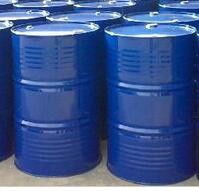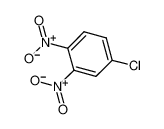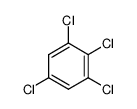| Product name | 1,2,4-trichlorobenzene |
|---|
| Product number | - |
|---|---|
| Other names | 1,2,5-Trichlorobenzene |
| Identified uses | For industry use only. 1,2,4-Trichlorobenzene is used as a dye carrier, a herbicide intermediate, a heat-transfer medium, a dielectric fluid in transformers, a degreaser, a lubricant, in synthetic transformer oils, and as a solvent in chemical manufacturing. 1,2,4-Trichlorobenzene was formerly used as an insecticide against termites. |
|---|---|
| Uses advised against | no data available |
| Company | MOLBASE (Shanghai) Biotechnology Co., Ltd. |
|---|---|
| Address | Floor 4 & 5, Building 12, No. 1001 North Qinzhou Road, Xuhui District, Shanghai, China |
| Telephone | +86(21)64956998 |
| Fax | +86(21)54365166 |
| Emergency phone number | +86-400-6021-666 |
|---|---|
| Service hours | Monday to Friday, 9am-5pm (Standard time zone: UTC/GMT +8 hours). |
Acute toxicity - Oral, Category 4
Skin irritation, Category 2
Hazardous to the aquatic environment, short-term (Acute) - Category Acute 1
Hazardous to the aquatic environment, long-term (Chronic) - Category Chronic 1
2.2 GHS label elements, including precautionary statements| Pictogram(s) |   |
|---|---|
| Signal word | Warning |
| Hazard statement(s) | H302 Harmful if swallowed H315 Causes skin irritation H410 Very toxic to aquatic life with long lasting effects |
| Precautionary statement(s) | |
| Prevention | P264 Wash ... thoroughly after handling. P270 Do not eat, drink or smoke when using this product. P280 Wear protective gloves/protective clothing/eye protection/face protection. P273 Avoid release to the environment. |
| Response | P301+P312 IF SWALLOWED: Call a POISON CENTER/doctor/…if you feel unwell. P330 Rinse mouth. P302+P352 IF ON SKIN: Wash with plenty of water/... P321 Specific treatment (see ... on this label). P332+P313 If skin irritation occurs: Get medical advice/attention. P362+P364 Take off contaminated clothing and wash it before reuse. P391 Collect spillage. |
| Storage | none |
| Disposal | P501 Dispose of contents/container to ... |
none
3.Composition/information on ingredients 3.1 Substances| Chemical name | Common names and synonyms | CAS number | EC number | Concentration |
|---|---|---|---|---|
| 1,2,4-trichlorobenzene | 1,2,4-trichlorobenzene | 120-82-1 | none | 100% |
Consult a physician. Show this safety data sheet to the doctor in attendance.
If inhaledFresh air, rest. Refer for medical attention.
In case of skin contactRemove contaminated clothes. Rinse skin with plenty of water or shower. Refer for medical attention .
In case of eye contactFirst rinse with plenty of water for several minutes (remove contact lenses if easily possible), then refer for medical attention.
If swallowedRinse mouth. Give one or two glasses of water to drink. Refer for medical attention .
4.2 Most important symptoms/effects, acute and delayedExposures to high concentrations via inhalation are potentially hazardous to the lungs, kidneys and liver. Prolonged or repeated exposures or short exposure to high concentrations via inhalation are potentially hazardous to the lungs, kidneys and liver. Prolonged or repeated exposure to the eyes is likely to result in moderate pain and transient irritation. Prolonged or repeated contact with the skin may result in moderate irritation and possible systemic effects. Ingestion: May cause kidney and liver damage. (USCG, 1999)
4.3 Indication of immediate medical attention and special treatment needed, if necessaryImmediate first aid: Ensure that adequate decontamination has been carried out. If patient is not breathing, start artificial respiration, preferably with a demand-valve resuscitator, bag-valve-mask device, or pocket mask, as trained. Perform CPR as necessary. Immediately flush contaminated eyes with gently flowing water. Do not induce vomiting. If vomiting occurs, lean patient forward or place on left side (head-down position, if possible) to maintain an open airway and prevent aspiration. Keep patient quiet and maintain normal body temperature. Obtain medical attention. /Aromatic hydrocarbons and related compounds/
5.Fire-fighting measures 5.1 Extinguishing media Suitable extinguishing mediaDo not extinguish fire unless flow can be stopped. Use water in flooding quantities as fog. Solid streams of water may spread fire. Cool all affected containers with flooding quantities of water. Apply water from as far a distance as possible. Use foam, dry chemical, or carbon dioxide.
5.2 Specific hazards arising from the chemicalSpecial Hazards of Combustion Products: May contain toxic hydrogen chloride and phosgene. Behavior in Fire: Decomposes to form hydrogen chloride and phosgene. (USCG, 1999)
5.3 Special protective actions for fire-fightersWear self-contained breathing apparatus for firefighting if necessary.
6.Accidental release measures 6.1 Personal precautions, protective equipment and emergency proceduresUse personal protective equipment. Avoid dust formation. Avoid breathing vapours, mist or gas. Ensure adequate ventilation. Evacuate personnel to safe areas. Avoid breathing dust. For personal protection see section 8.
6.2 Environmental precautionsPersonal protection: filter respirator for organic gases and vapours adapted to the airborne concentration of the substance. Do NOT let this chemical enter the environment. Collect leaking liquid in sealable containers. Absorb remaining liquid in sand or inert absorbent. If solid: sweep spilled substance into sealable containers. Then store and dispose of according to local regulations.
6.3 Methods and materials for containment and cleaning upSRP: Wastewater from contaminant suppression, cleaning of protective clothing/equipment, or contaminated sites should be contained and evaluated for subject chemical or decomposition product concentrations. Concentrations shall be lower than applicable environmental discharge or disposal criteria. Alternatively, pretreatment and/or discharge to a POTW is acceptable only after review by the governing authority. Due consideration shall be given to remediation worker exposure (inhalation, dermal and ingestion) as well as fate during treatment, transfer and disposal. If it is not practicable to manage the chemical in this fashion, it must meet Hazardous Material Criteria for disposal.
7.Handling and storage 7.1 Precautions for safe handlingAvoid contact with skin and eyes. Avoid formation of dust and aerosols. Avoid exposure - obtain special instructions before use.Provide appropriate exhaust ventilation at places where dust is formed. For precautions see section 2.2.
7.2 Conditions for safe storage, including any incompatibilitiesSeparated from strong oxidants, acids and food and feedstuffs.1,2,4-Trichlorobenzenes are liquids at room temperature and are shipped in bulk in aluminum tank trucks and steel or stainless steel tank cars.
8.Exposure controls/personal protection 8.1 Control parameters Occupational Exposure limit valuesRecommended Exposure Limit: Ceiling value: 5 ppm (40 mg/cu m).
Biological limit valuesno data available
8.2 Appropriate engineering controlsHandle in accordance with good industrial hygiene and safety practice. Wash hands before breaks and at the end of workday.
8.3 Individual protection measures, such as personal protective equipment (PPE) Eye/face protectionSafety glasses with side-shields conforming to EN166. Use equipment for eye protection tested and approved under appropriate government standards such as NIOSH (US) or EN 166(EU).
Skin protectionWear impervious clothing. The type of protective equipment must be selected according to the concentration and amount of the dangerous substance at the specific workplace. Handle with gloves. Gloves must be inspected prior to use. Use proper glove removal technique(without touching glove's outer surface) to avoid skin contact with this product. Dispose of contaminated gloves after use in accordance with applicable laws and good laboratory practices. Wash and dry hands. The selected protective gloves have to satisfy the specifications of EU Directive 89/686/EEC and the standard EN 374 derived from it.
Respiratory protectionWear dust mask when handling large quantities.
Thermal hazardsno data available
9.Physical and chemical properties| Physical state | colorless liquid with a pleasant odor. |
|---|---|
| Colour | Colorless liquid |
| Odour | Aromatic odor |
| Melting point/ freezing point | 16ºC |
| Boiling point or initial boiling point and boiling range | 214°C(lit.) |
| Flammability | Class IIIB Combustible Liquid: Fl.P. at or above 93.33°C.Combustible SolidCombustible. Gives off irritating or toxic fumes (or gases) in a fire. |
| Lower and upper explosion limit / flammability limit | Lower Flammable Limit: 2.5% by vol at 302 deg F (150°C). Upper Flammable Limit: 6.6% by vol at 302 deg F (150°C) |
| Flash point | 110°C |
| Auto-ignition temperature | 571.11°C |
| Decomposition temperature | no data available |
| pH | no data available |
| Kinematic viscosity | no data available |
| Solubility | In water:INSOLUBLE |
| Partition coefficient n-octanol/water (log value) | log Kow = 4.02 |
| Vapour pressure | 1 mm Hg ( 40 °C) |
| Density and/or relative density | 1.454g/mLat 25°C(lit.) |
| Relative vapour density | >6 (vs air) |
| Particle characteristics | no data available |
no data available
10.2 Chemical stabilityStable at room temperature
10.3 Possibility of hazardous reactionsVapor explosion hazard indoors, outdoors, or in sewers. Runoff to sewer may creat fire or explosion hazard.1,2,4-TRICHLOROBENZENE can react vigorously with oxidizing materials . Yields hydrogen chloride and phosgene when heated to decomposition (USCG, 1999).
10.4 Conditions to avoidno data available
10.5 Incompatible materials... On contact with acids or acid fumes they evolve highly toxic /hydrogen chloride/ fumes. /chlorides/
10.6 Hazardous decomposition productsWhen heated to decomp, it emits toxic fumes of /hydrogen chloride/.
11.Toxicological information Acute toxicity- Oral: LD50 Rat oral 756 mg/kg
- Inhalation: no data available
- Dermal: LD50 Rat percutaneous 6100 mg/kg
no data available
Serious eye damage/irritationno data available
Respiratory or skin sensitizationno data available
Germ cell mutagenicityno data available
CarcinogenicityCancer Classification: Group D Not Classifiable as to Human Carcinogenicity
Reproductive toxicityNo information is available on the reproductive or developmental effects of 1,2,4-trichlorobenzene in humans. Several studies reported that 1,2,4-trichlorobenzene did not affect fertility or viability nor cause increased resorptions, embryolethality, or teratogenicity in orally exposed rats. One oral study in rats reported retarded growth in fetuses.
STOT-single exposureno data available
STOT-repeated exposureno data available
Aspiration hazardno data available
12.Ecological information 12.1 Toxicity- Toxicity to fish: LC50; Species: Danio rerio (Zebra danio); Conditions: freshwater, static, 23°C, pH 7.4, hardness 320 mg/L CaCO3, dissolved oxygen > or =70% mg/L; Concentration: 6300 ug/L for 48 hr (95% confidence interval: 4400-9000 ug/L)
- Toxicity to daphnia and other aquatic invertebrates: EC50; Species: Daphnia magna (Water flea); Conditions: freshwater, static; Concentration: 5400 ug/L for 24 hr; Effect: behavior, equilibrium /formulation
- Toxicity to algae: EC50; Species: Pseudokirchneriella subcapitata (Green algae, init concn 500000 cells/L); Conditions: static, 20°C; Concentration: 1400 ug/L for 96 hr; Effect: growth, general
- Toxicity to microorganisms: no data available
AEROBIC: A 0% theoretical BOD in sludge over a 2 week incubation period was observed for 1,2,4-trichlorobenzene(1). The aerobic biodegradation half-life of 1,2,4-trichlorobenzene in natural waters has been reported as 28 days(2). An 8-day theoretical BOD of 1% in a benzene acclimated sludge was observed for 1,2,4-trichlorobenzene(3). A 20-day theoretical BOD of 0% in municipal wastewater was observed for 1,2,4-trichlorobenzene while 20-day theoretical BODs of 78, 100 and 55% were observed for industrial wastewater(4). 1,2,4-Trichlorobenzene was dechlorinated 0.3-50.1% after 7 days incubation in soil amended with up to 4 mM bromoethanesulfonate, 2 mM sulfate and 7.5 mM hydrogen(5). After 4 days of incubation 28 uM of 1,2,4-trichlorobenzene was biodegraded to 1,4-dichlorobenzene and chlorobenzene(6). 1,2,4-Trichlorobenzene, under aerobic conditions, degraded 40% in dune sediment taken near Zandvoort, Netherlands after a 2 month lag time(7). 1,2,4-Trichlorobenzene was biodegraded 90% in groundwater samples under aerobic conditions(8). 1,2,4-Trichlorobenzene had influent concns of 90 and 8100 ug/L and effluent concns of <5.0 and <10 ug/L using an activated sludge with a daily mass loading of COD/bacterial mass ratios of 0.3 and 0.6(9).
12.3 Bioaccumulative potentialBCF values of 420 to 1,140 were measured in carp exposed to 50 ug/L of 1,2,4-trichlorobenzene during a 6 week incubation period and BCF values of 120 to 1,300 were measured in carp exposed to 5 ug/L of 1,2,4-trichlorobenzene during a 6 week incubation period(1). The BCF value of 1,2,4-trichlorobenzene in fish in a flowing water system was 490 while the BCF value for trout in a static water system was 2400(2). Log BCFs of 3.11, 3.51, 3.36 and 3.57 were measured in 4 rainbow trout samples on a whole body basis, and 4.20, 4.57, 4.54 and 4.71 using lipid basis(3). Log BCFs of 3.10, 2.60, 1.91, 3.19, 3.32 and 3.31 were measured in Atlantic croaker, blue crab, spotted sea trout, blue catfish, fathead minnow and flagfish, respectively, on a whole body basis, and at 4.20, 4.57, 4.76, 4.90, 3.54, 4.68, 3.45, 4.54, 4.71 and 4.25, respectively, using lipid basis(3). 1,2,4-Trichlorobenzene had a log BCF of 2.95 in guppy (Poecilia reticulata)(4). A BCF of 491 was given for 1,2,4-trichlorobenzene in fish(5). 1,2,4-Trichlorobenzene at concns of 3.2 and 53 ng/L, in a flow-through system showed BCFs of 1300 and 3200, respectively, in rainbow trout exposed over 119 days(6). Fish continuously exposed to a mean measured aqueous concn of 2.9 ug/L of 1,2,4-trichlorobenzene had a estimated equilibrium bioconcentration factor of 182(7). According to a classification scheme(8), these BCF values suggest that bioconcentration in aquatic organisms is high to very high. Daphnids continuously exposed to a mean measured aqueous concn of 3.1 ug/L of 1,2,4-trichlorobenzene had a estimated equilibrium bioconcentration factor of 142(7).
12.4 Mobility in soilMeasured log Kocs of 3.1(1), 3.30(2), 3.35(3), 3.96(4-5), 4.03(6) were reported for 1,2,4-trichlorobenzene in soil. Koc values for 1,2,4-trichlorobenzene were 864 and 440 in soil and peaty soil(7). Log Koc values for peat soil and Dover soil taken from Zhejiang Province, China were 3.06 and 3.58(8). According to a recommended classification scheme(9), these Koc values suggest that 1,2,4-trichlorobenzene has moderate to no mobility in soil.
12.5 Other adverse effectsno data available
13.Disposal considerations 13.1 Disposal methods ProductThe material can be disposed of by removal to a licensed chemical destruction plant or by controlled incineration with flue gas scrubbing. Do not contaminate water, foodstuffs, feed or seed by storage or disposal. Do not discharge to sewer systems.
Contaminated packagingContainers can be triply rinsed (or equivalent) and offered for recycling or reconditioning. Alternatively, the packaging can be punctured to make it unusable for other purposes and then be disposed of in a sanitary landfill. Controlled incineration with flue gas scrubbing is possible for combustible packaging materials.
14.Transport information 14.1 UN Number| ADR/RID: UN2321 | IMDG: UN2321 | IATA: UN2321 |
| ADR/RID: TRICHLOROBENZENES, LIQUID |
| IMDG: TRICHLOROBENZENES, LIQUID |
| IATA: TRICHLOROBENZENES, LIQUID |
| ADR/RID: 6.1 | IMDG: 6.1 | IATA: 6.1 |
| ADR/RID: III | IMDG: III | IATA: III |
| ADR/RID: yes | IMDG: yes | IATA: yes |
no data available
14.7 Transport in bulk according to Annex II of MARPOL 73/78 and the IBC Codeno data available
15.Regulatory information 15.1 Safety, health and environmental regulations specific for the product in question| Chemical name | Common names and synonyms | CAS number | EC number |
|---|---|---|---|
| 1,2,4-trichlorobenzene | 1,2,4-trichlorobenzene | 120-82-1 | none |
| European Inventory of Existing Commercial Chemical Substances (EINECS) | Listed. | ||
| EC Inventory | Listed. | ||
| United States Toxic Substances Control Act (TSCA) Inventory | Listed. | ||
| China Catalog of Hazardous chemicals 2015 | Listed. | ||
| New Zealand Inventory of Chemicals (NZIoC) | Listed. | ||
| Philippines Inventory of Chemicals and Chemical Substances (PICCS) | Listed. | ||
| Vietnam National Chemical Inventory | Listed. | ||
| Chinese Chemical Inventory of Existing Chemical Substances (China IECSC) | Listed. | ||
| Creation Date | Aug 12, 2017 |
|---|---|
| Revision Date | Aug 12, 2017 |
- CAS: Chemical Abstracts Service
- ADR: European Agreement concerning the International Carriage of Dangerous Goods by Road
- RID: Regulation concerning the International Carriage of Dangerous Goods by Rail
- IMDG: International Maritime Dangerous Goods
- IATA: International Air Transportation Association
- TWA: Time Weighted Average
- STEL: Short term exposure limit
- LC50: Lethal Concentration 50%
- LD50: Lethal Dose 50%
- EC50: Effective Concentration 50%
- IPCS - The International Chemical Safety Cards (ICSC), website: http://www.ilo.org/dyn/icsc/showcard.home
- HSDB - Hazardous Substances Data Bank, website: https://toxnet.nlm.nih.gov/newtoxnet/hsdb.htm
- IARC - International Agency for Research on Cancer, website: http://www.iarc.fr/
- eChemPortal - The Global Portal to Information on Chemical Substances by OECD, website: http://www.echemportal.org/echemportal/index?pageID=0&request_locale=en
- CAMEO Chemicals, website: http://cameochemicals.noaa.gov/search/simple
- ChemIDplus, website: http://chem.sis.nlm.nih.gov/chemidplus/chemidlite.jsp
- ERG - Emergency Response Guidebook by U.S. Department of Transportation, website: http://www.phmsa.dot.gov/hazmat/library/erg
- Germany GESTIS-database on hazard substance, website: http://www.dguv.de/ifa/gestis/gestis-stoffdatenbank/index-2.jsp
- ECHA - European Chemicals Agency, website: https://echa.europa.eu/




































